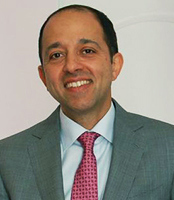The Centers for Disease Control estimate that approximately 7000 babies are born with cleft lip and/or cleft palate (CLP) each year in the U.S. Clefts occur more often than most other types of birth defects. Along with disfigurement, the structural differences of the mouth, lips and face caused by clefts can lead to myriad complications for the patient. In infancy, the ability to nurse may be impaired because the opening in the palate interferes with suction. As the child develops, difficulties with breathing, hearing, seeing and speaking may develop. Teeth may be crooked and jaws may misalign.
On the bright side, options exist to help alleviate each of these problems. The process of repairing CLP is not an easy one, but with surgical and therapeutic intervention challenges can be overcome allowing the patient to lead a normal life. The evolution and improvement of plastic surgery techniques, medical and dental care, and speech and audiology treatments have all contributed to the successful treating of CLP. Awareness of the psychosocial impact clefts pose for a person has led to the development of strategies to help patients cope with their condition.
The American Cleft Palate-Craniofacial Association advocates for patients’ care to be managed by a team of cleft-craniofacial specialists that support coordination of surgical, medical and dental professionals as they plan treatment. This is designed to make the process less disruptive for the patient and her family while avoiding overlap of services.
Evaluation of and planning for treatment of a cleft lip/palate ideally begins soon after diagnosis, even prenatally. The multi-step process continues from infancy through young adulthood, when the facial features have fully matured. Fortunately, procedures typically produce outstanding results. Early therapeutic intervention can help restore as normal appearance as possible before a child begins to interact with peers, thus minimizing social discomfort. For further reading on the topic of social factors see www.cpcjournal.org/doi/full/10.1597/05-018.1. This study examined and compared social acceptance, social behavior, and facial movements of children with and without oral clefts in an experimental setting.
The goal of surgery to repair a cleft lip is to create a normal appearance and restore normal function. The procedure, whether needed on only one side or both, will reconstruct the philtral ridge (that groove between the nostrils and upper lips); the vermilion cutaneous border (the distinction between reddish lips and normal skin); the nostril floor and the complex muscles that underlie the mouth and lips. These muscles, including the prolabium (the prominent center of the upper lip) allow the mouth and lips to move in a natural way.
During the operation for a cleft lip, the surgeon makes an incision on each side of the cleft from the mouth into the nostril. He turns the pink outer portion of the cleft in and pulls the muscle and the skin of the lip together to close the separation. Muscle function and “cupid’s bow” shape of the mouth are established. Nostril deformity is also improved.
Cleft palate repair is required for a multitude of reasons including to restore Eustachian tube function, to close vertical passageways between the mouth and nasal cavity, to minimize changes in normal facial growth and to produce normal speech. As with cleft lip, cleft palate may appear on one side or both. The separation may be small, or may extend the length of the palate from front to back. If the soft palate is involved, that may be repaired during cleft lip repair at approximately 3 months of age. The hard palate is repaired later, after teeth have come in at approximately 18 months of age.
To perform a palate repair, the surgeon makes an incision on each side of the separation. Tissue is relocated from the sides of the cleft to the center of the roof of the mouth. This tissue is used to rebuild the palate, joining together with muscle and lengthening the palate. This correction will allow the child to eat and learn to speak correctly.
 Kayvon Haghighi, DDS, MD, FACS is licensed to practice both medicine and dentistry in the state of New Jersey. Dr. Haghighi’s unique combination of surgical training and experience in facial reconstruction enables him to analyze your condition from multiple points of view.
Kayvon Haghighi, DDS, MD, FACS is licensed to practice both medicine and dentistry in the state of New Jersey. Dr. Haghighi’s unique combination of surgical training and experience in facial reconstruction enables him to analyze your condition from multiple points of view.
